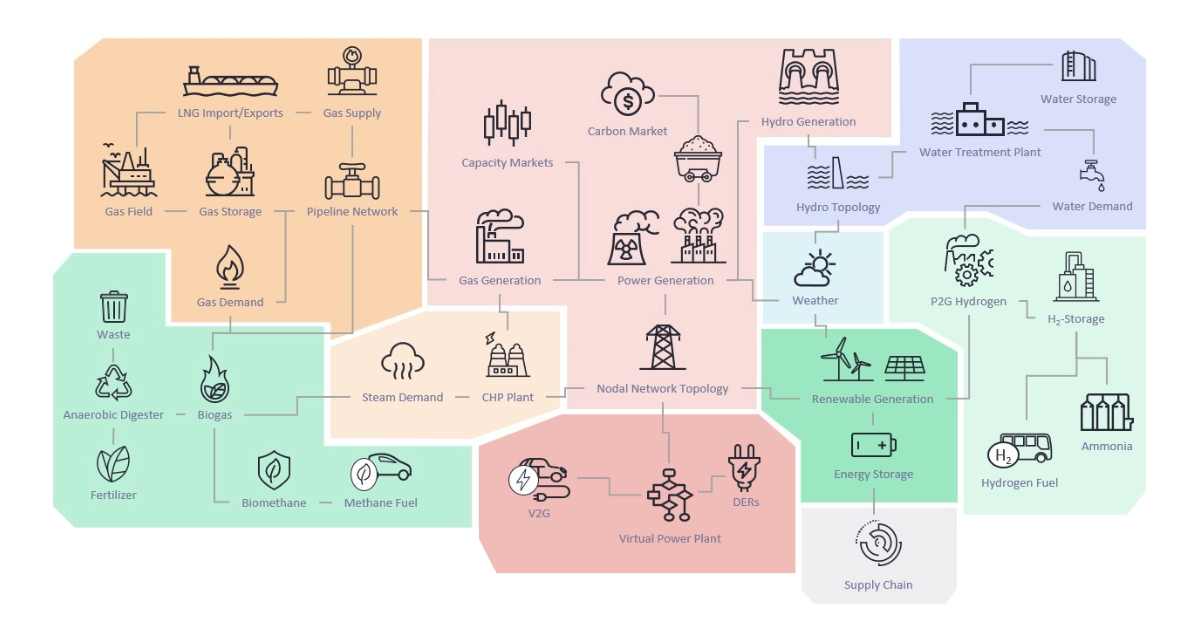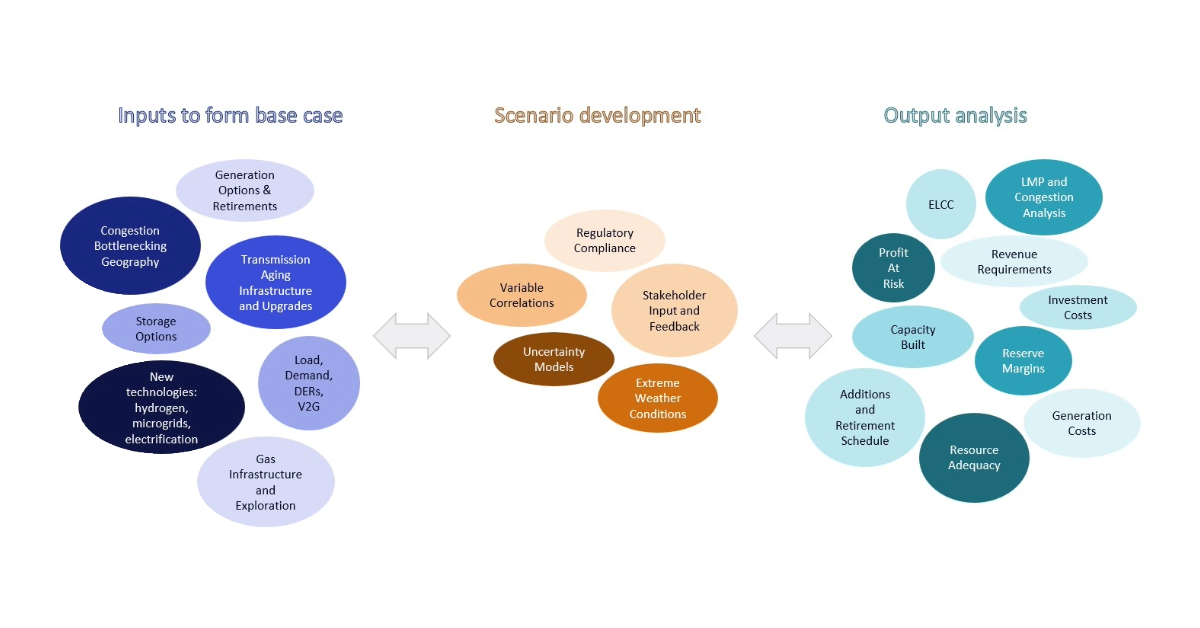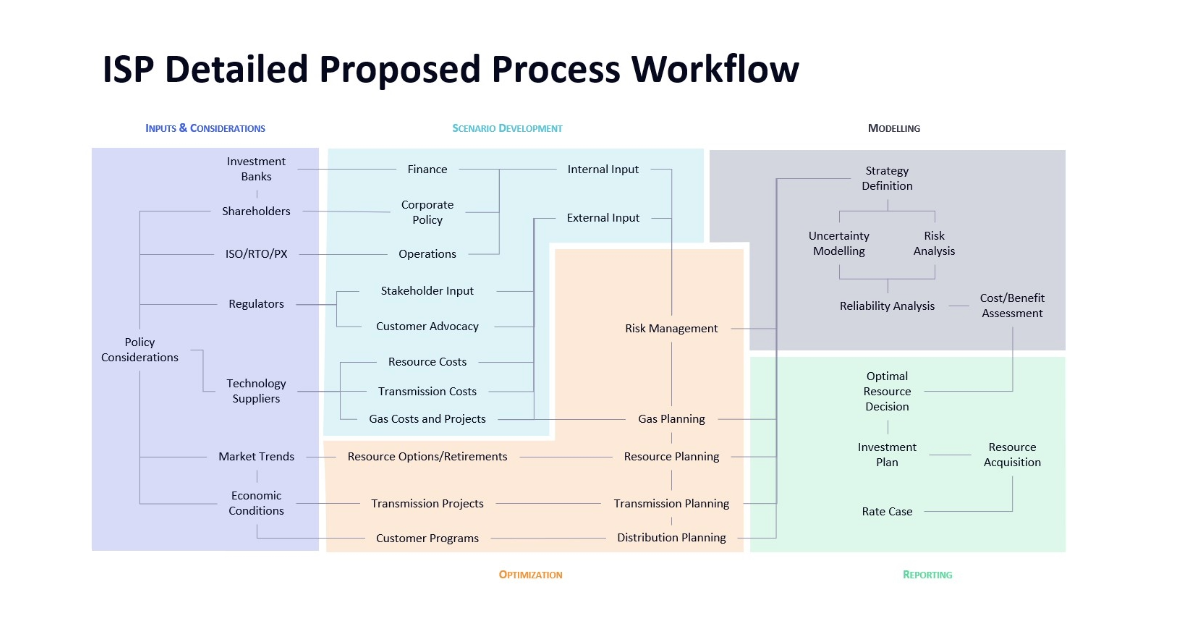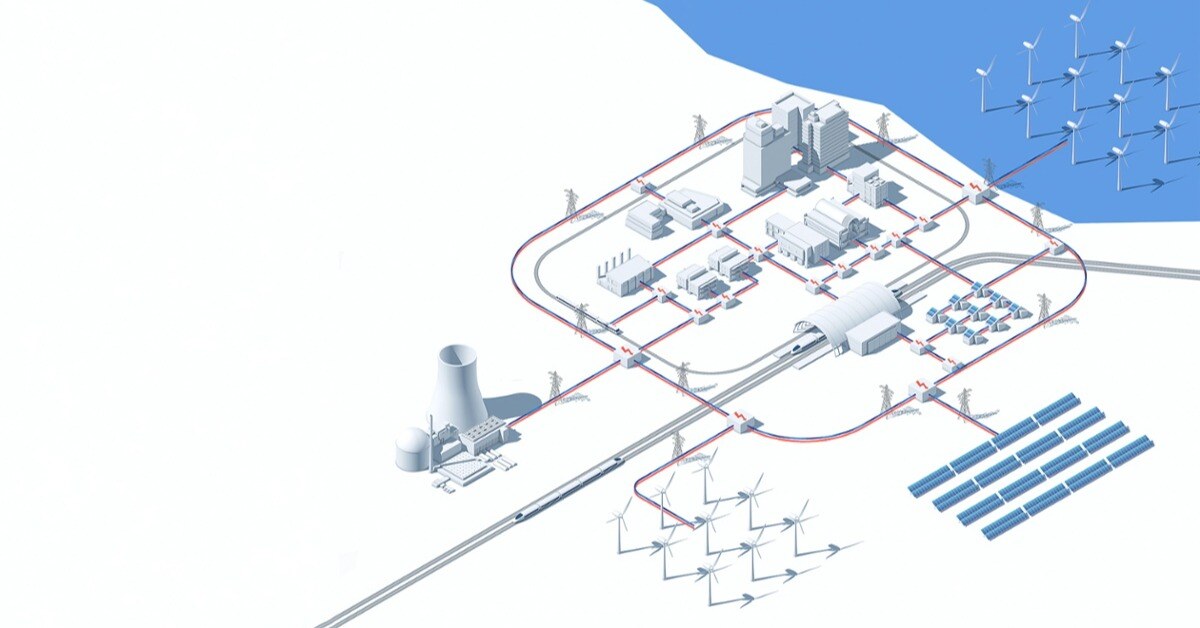What is Integrated System Planning (ISP)?
In our last blog, we discussed the traditional method utilities and energy organizations have taken to planning – conducting multiple resource’s...

In some of our recent blogs, we discussed why there is a need for utilities and energy organizations to adopt a new planning methodology for long-term planning. The new methodology proposed is integrated system planning (ISP) - a holistic planning approach where traditionally disparate departments and planning organizations work together to develop an integrated system plan. However, because ISP is a new approach to energy planning, there is not one single tried and true way to address ISP. It varies by energy company, region and, more importantly, by strategic corporate objectives, and the current energy matrix and business practices. In this blog, we’ll discuss how some of the first movers and early adopters are approaching ISP, plus the approach suggested by Energy Exemplar’s internal expert, Carlos Romero.
In California, the California Energy Commission (CEC), California Public Utilities Commission (CPUC) and CAISO are working together to take an iterative approach to integrated resource and transmission planning. The organizations are undergoing this effort to try to tackle the need for new renewable resources and infrastructure to transport clean energy to California customers while navigating long lead times and regulatory requirements calling for extended horizon planning in transmission planning.
In practice, what occurs is the CPUC generates IRP portfolios and subsequently resources are mapped to busbars, which allows for more granular analysis of transmission issues (moving from zonal to nodal analysis). The CEC maps the non-battery resources and the CPUC maps battery resources and thermal units that will not be retained. From there, CAISO does a high-level review of the mapped resources’ compliance with transmission constraints, providing input and guidance on specific transmission or interconnection issues. The CPUC then reviews CAISO’s findings to determine if changes are required to resource selection, resource mapping, or thermal generation unit identification. If there are no issues this all feeds into the Transmission planning process. If there are issues, the information feeds back into the IRP portfolios and resources mapped to busbars.
MISO calls their version the MISO Region Reliability Imperative where the ISO, its members, state regulators and other entities responsible for system reliability all have an obligation to work together to address challenges. MISO organizes the Region Reliability Imperative into four areas – market redefinition, long range transmission planning, operations of the future, and market system enhancements.
The long-range transmission planning serves as a roadmap, and will assist in providing:
- Informed future investments
- Periodic re-evaluation supporting alignment with fleet transmission and policy changes
- Changes as transmission needs change
- Coordination with other planning efforts
HECO is perhaps one of the most advanced organizations when it comes to ISP. HECO started work on its Integrated Grid Planning (IGP) several years ago to meet the need for “harmonizing resource, transmission, and distribution planning processes by collectively evaluating the identified needs and coordinating solutions that provide the best value on a consolidated basis.” The IGP has a stakeholder and community focus and has four steps: data collection, plan definition, clean energy marketplace creation, and plan refinement. The IGP connects capacity expansion planning, resource adequacy analysis, distribution analysis, production cost simulation and system security analysis allowing for in-depth transmission analytics and considering both the transmission and distribution systems simultaneously, which will be critical as demand side resources become more prevalent.
SRP has found that to adequately meet customer needs, an ISP rather than an IRP approach is needed - especially as the utility needs to enable two-way power flow for rooftop solar, EV charging, and more. As SRP develops its ISP approach, the utility intends to holistically address grid needs across all areas, including resource, transmission, distribution and customer planning with the forecasting group providing forward-looking data to the team.
In considering how to get to 2050 and what needs to happen to accomplish that, leaders at Xcel Energy decided that the company needed to shift from resource specific silos to a centralized division. This division is called the Integrated System Planning Department where all generation, transmission, and natural gas planning will take place to meet developing needs.
Duke Energy is adopting an Integrated System and Operations Planning (ISOP) framework to optimize capacity and resource investments across generation, transmission, customer delivery (distribution) and customer solutions. This framework's development has been driven by fast changes to the energy mix which are mandating coordination across utility planning processes to execute on the energy transition while maintaining reliability and least cost planning. The ISOP will link generation, transmission and grid edge resources while also expanding on Duke’s grid modernization plan with the integration of further renewable energy and new distribution resources.
While all these organizations are approaching ISP differently, and are at different stages of adoption, the fact that there are so many early movers highlights that ISP is the planning methodology of the future. Now that we’ve covered how various organizations are proceeding with ISP, we’ll cover our expert Carlos Romero’s suggested approach.
Integrated System Planning is more sophisticated than traditional methods of planning and requires software applications, solutions, and business workflows capable of modeling multiple commodities, transmission, and distribution. Most solutions are not designed to model all these interconnected components together as one.
Energy Exemplar's PLEXOS enterprise platform is unique because it has been designed to model a variety of resource commodities (gas, power, hydrogen, water, among others), transmission, and distribution - it is also extremely customizable and scalable. This new, integrated, holistic problem is also a bigger one to solve, which will require more computing power. Energy Exemplar's PLEXOS Cloud infrastructure offers more powerful and flexible computing capability, allowing utilities and energy companies the ability to solve complex problems, like ISP, effectively and efficiently.
Carlos Romero, Principal of Technical Sales, is our ISP expert here at Energy Exemplar. Below is some advice from him on how to get started on the journey from disparate, isolated planning processes to a truly holistic ISP.
One of the first steps towards a more comprehensive planning process (ISP journey), is to recognize the wide scope of commodities and resources in the energy industry. It is not just power generation, or electric transmission grids. It is a vast, interconnected system of multiple energy commodities, including gas, heat, power, and water, among others.
End customers demand energy in different forms for multiple uses, and system planners must also view the energy industry in this wide lens.

A second step towards ISP is to begin integrating and consolidating solutions, applications, workflows, people’s functions, reports, etc. At a high-level, begin to see the planning process not by commodities, but instead by processes across commodities or business units.
For example, the data and input process should be a consistent process for all commodities across all business units. This way, a process like electric load forecast, can be common and standard within power generation, electric transmission, electric distribution, etc. This would achieve that the load forecasting task would be consistent, agreed upon and correlated for all business units within the energy enterprise.

The next step in the journey is to arrange the ISP process in the following stages listed and depicted below:

A platform for collaboration and integrated modeling/optimization and reporting will be needed. It must be secure, scalable, flexible and adaptable. PLEXOS and PLEXOS Cloud have all the capabilities required for utilities and energy organizations to embark on the journey to a new ISP approach.
To learn more about ISP from Carlos, check out his presentation - The Future of IRP: ISP (Integrated System Planning). If you’re ready to take the next step and see how the PLEXOS Platform and Energy Exemplar’s team can help you get started on your ISP journey, talk to an expert!

In our last blog, we discussed the traditional method utilities and energy organizations have taken to planning – conducting multiple resource’s...

The energy landscape is rapidly evolving with the penetration of renewable resources, dynamically changing demand and the rapid electrification of...

The energy industry has undergone significant change in the past twenty years or so, and while new technologies enter the stage, and older players...